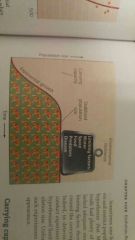![]()
![]()
![]()
Use LEFT and RIGHT arrow keys to navigate between flashcards;
Use UP and DOWN arrow keys to flip the card;
H to show hint;
A reads text to speech;
26 Cards in this Set
- Front
- Back
- 3rd side (hint)
|
Population density |
The number of individuals within a population per unit area |
|
|
|
Population distribution |
The spatial arrangement of organisms within a particular area |
|
|
|
Population ecology |
Study of the quantitative dynamics of how many individuals within a species interact with one another |
|
|
|
Population size |
The number of individual organisms present at a given time |
|
|
|
Population size |
The number of individual organisms present at a given time |
|
|
|
R selected |
Term denoting a species with high biotic potential whose members produce a large number of Offspring in a short time but don't care for young after birth |
|
|
|
Specialist |
A species that can survive only in a narrow range of habitats that contain very specific resources |
|
|
|
Speciation |
The process by which new species are generated |
|
|
|
Species |
A population or group of populations of a particular type of organism whose members share certain characteristics and can mate producing fertile offspring |
|
|
|
survivorship curve |
A graph that shows how the likelihood death for members of a population varies with age |
|
|
|
How does speciation and Extinction work together to determine Earth's biodiversity |
The number of species in existence at any one time is equal to the number added through speciation - the number removed by Extinction |
|
|
|
Describe background Extinction rate. Differentiate between background Extinction rate and mass extinction events. Provide at least one example of a mass extinction event |
Background Extinction rate- rate at which Extinction occurs gradually one species at a time. Mass extinction event- events of Staggering proportions that killed off massive numbers of species at once. |
Example is the dinosaurs |
|
|
Define natural selection and identify six logical issues associated with natural selection |
Natural selection is the process by which traits that enhance survival and reproduction are passed on more frequently to survive generations of organisms. The six logical issues associated with natural selection are: - Organisms produce more offspring than can survive - Individuals vary in their characteristics -Many characteristics are inherited by Offspring from parents -Some individuals will be better suited -More offspring that are better suited with higher quality transmit more genes to -Future generations and future Generations carry more genes thus more characteristics better suited individuals *as a result characteristics evolve across Generations Through Time |
|
|
|
Results of natural selection |
Adaption, evolution, and the more advantageous traits become more common |
|
|
|
Define emigration |
The departure of individuals from a population |
|
|
|
Define environmental resistance |
Some of environmental factors that resist the biotic potential of an organism and limit numeral increase |
|
|
|
Identify and Define 5 levels of ecological organization |
Organization- an individual living thing. Population- a group of individuals of a species that live in a particular area. Community- a set of populations of different species living together in a particular area. Ecosystem- a functional system consisting of a community it's nonliving environment and the interactions between them. Biosphere- the sum total of living things on earth in the area they inhabit. |
|
|
|
Differentiate between habitat and Niche |
The role of a species plays in the environment is called an inch. Habitat is the environment where the species lives. |
|
|
|
Can trust between specialist and generalist species |
Generalist species thrive in a wide variety of environmental conditions and use multiple resources. Especially species can only survive in a narrow range of environmental conditions and diets. |
|
|
|
Identify six characteristics of populations that are used to predict future Dynamics |
Population size, population density, population distribution, sex ratios, age structure, and birth and death rates |
|
|
|
Identify the three patterns of population distribution |
Random equals dispersed at random through the environment. Uniform equals individuals evenly spaced equidistant from each other. Clump equals individuals occur in patches (fish schools) |
|
|
|
Four factors of population growth |
1.) Birth within the population. 2.) Death within the population. 3.) Immigration 4.) Emigration (departure of individuals) |
|
|
|
How to calculate growth rate |
(crude birth rate + immigration rate) - (crude death rate + emigration rate)=Growth Rate |
|
|
|
What shape of a growth curve is for exponential growth |
The j-shaped Curve |
|
|
|
Example of limiting factors |
There are 10 rabbits in a habitat. They have enough space and water for 20 rabbits but there's only enough food for 10. Population will not grow. |
|
|
|
What shape does a logistic growth curve show? |
The shape Rises sharply then become strong and stable |

|

